Limited versus full sternotomy for aortic valve replacement
- PMID: 38054555
- PMCID: PMC10698838
- DOI: 10.1002/14651858.CD011793.pub3
Limited versus full sternotomy for aortic valve replacement
Abstract
Background: Aortic valve disease is a common condition easily treatable with cardiac surgery. This is conventionally performed by opening the sternum ('median sternotomy') and replacing the valve under cardiopulmonary bypass. Median sternotomy is well tolerated, but as less invasive options become available, the efficacy of limited incisions has been called into question. In particular, the effects of reducing the visibility and surgical access have raised safety concerns with regard to the placement of cannulae, venting of the heart, epicardial wire placement, and de-airing of the heart at the end of the procedure. These difficulties may increase operating times, affecting outcome. The benefits of smaller incisions are thought to include decreased pain; improved respiratory mechanics; reductions in wound infections, bleeding, and need for transfusion; shorter intensive care stay; better cosmesis; and a quicker return to normal activity. This is an update of a Cochrane review first published in 2017, with seven new studies.
Objectives: To assess the effects of minimally invasive aortic valve replacement via a limited sternotomy versus conventional aortic valve replacement via median sternotomy in people with aortic valve disease requiring surgical replacement.
Search methods: We performed searches of CENTRAL, MEDLINE and Embase from inception to August 2021, with no language limitations. We also searched two clinical trials registries and manufacturers' websites. We reviewed references of primary studies to identify any further studies of relevance.
Selection criteria: We included randomised controlled trials comparing aortic valve replacement via a median sternotomy versus aortic valve replacement via a limited sternotomy. We excluded trials that performed other minimally invasive incisions such as mini-thoracotomies, port access, transapical, transfemoral or robotic procedures. Although some well-conducted prospective and retrospective case-control and cohort studies exist, these were not included in this review.
Data collection and analysis: Two review authors independently assessed trial papers to extract data, assess quality, and identify risk of bias. A third review author provided arbitration where required. We determined the certainty of evidence using the GRADE methodology and summarised results of patient-relevant outcomes in a summary of findings table.
Main results: The review included 14 trials with 1395 participants. Most studies had at least two domains at high risk of bias. We analysed 14 outcomes investigating the effects of minimally invasive limited upper hemi-sternotomy on aortic valve replacement as compared to surgery performed via full median sternotomy. Upper hemi-sternotomy may have little to no effect on mortality versus full median sternotomy (risk ratio (RR) 0.93, 95% confidence interval (CI) 0.45 to 1.94; 10 studies, 985 participants; low-certainty evidence). Upper hemi-sternotomy for aortic valve replacement may increase cardiopulmonary bypass time slightly, although the evidence is very uncertain (mean difference (MD) 10.63 minutes, 95% CI 3.39 to 17.88; 10 studies, 1043 participants; very low-certainty evidence) and may increase aortic cross-clamp time slightly (MD 6.07 minutes, 95% CI 0.79 to 11.35; 12 studies, 1235 participants; very low-certainty evidence), although the evidence is very uncertain. Most studies had at least two domains at high risk of bias. Postoperative blood loss was probably lower in the upper hemi-sternotomy group (MD -153 mL, 95% CI -246 to -60; 8 studies, 767 participants; moderate-certainty evidence). Low-certainty evidence suggested that there may be no change in pain scores by upper hemi-sternotomy (standardised mean difference (SMD) -0.19, 95% CI -0.43 to 0.04; 5 studies, 649 participants). Upper hemi-sternotomy may result in little to no difference in quality of life (MD 0.03 higher, 95% CI 0 to 0.06 higher; 4 studies, 624 participants; low-certainty evidence). Two studies reporting index admission costs concluded that limited sternotomy may be more costly at index admission in the UK National Health Service (MD 1190 GBP more, 95% CI 420 GBP to 1970 GBP, 2 studies, 492 participants; low-certainty evidence).
Authors' conclusions: The evidence was of very low to moderate certainty. Sample sizes were small and underpowered to demonstrate differences in some outcomes. Clinical heterogeneity was also noted. Considering these limitations, there may be little to no effect on mortality. Differences in extracorporeal support times are uncertain, comparing upper hemi-sternotomy to full sternotomy for aortic valve replacement. Before widespread adoption of the minimally invasive approach can be recommended, there is a need for a well-designed and adequately powered prospective randomised controlled trial. Such a study would benefit from also performing a robust cost analysis. Growing patient preference for minimally invasive techniques merits thorough quality of life analyses to be included as end points, as well as quantitative measures of physiological reserve.
Trial registration: ClinicalTrials.gov NCT02272621 NCT04012060.
Copyright © 2023 The Cochrane Collaboration. Published by John Wiley & Sons, Ltd.
Conflict of interest statement
BHK: recipient of an unrestricted grant from Edwards LifeSciences in 2017 to undertake a minimally invasive cardiac surgery fellowship. This was paid to the institution to cover salary only and was limited to a six‐month period with no other conditions or financial benefit. Edwards manufactures the rapid‐deployment valve that was utilised in one arm of one study (Borger 2015) but can be used in either minimally invasive or full sternotomy aortic valve replacement (i.e. either interventions in the review), and would not therefore gain financially regardless of the outcome of the review. BHK was a co‐author on an included study (Hancock 2019) and therefore had no involvement in the screening, data extraction or risk of bias assessment for this study.
SGJ: none known.
ADM: has a practice that includes minimally invasive aortic valve replacement.
SCM consults for Edwards Lifesciences, a manufacturer of equipment for minimal incision surgery. He is on the Advisory Board for Minimally Invasive Surgery, as well as being a member of the Speaker's Bureau. He is also an investigator on the PARTNER II trial, a prospective, multicentre, open‐label trial of people undergoing aortic valve surgery for severe aortic stenosis that includes transcatheter valve implantation strategies. He received personal honoraria from Edwards LifeSciences, Medtronic and Cryolife from 2019 to 2020, who manufacture valves that may have been included in the review. As a result, he was not involved in screening of titles or abstracts, did not assess full‐texts or contribute to data extraction (except for arbitration) and did not engage in assessing risk of bias or certainty of evidence assessments.
DC: has a practice that includes minimally invasive aortic valve replacement.
RJNNW: has a practice that includes minimally invasive aortic valve replacement.
EFA: has a practice that includes minimally invasive aortic valve replacement. EFA was a co‐author on an included study (Hancock 2019) and therefore had no involvement in the data extraction or risk of bias assessment for this study.
Figures
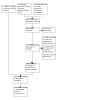
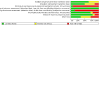
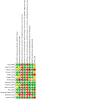
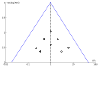
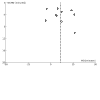
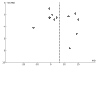
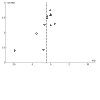
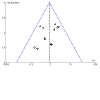
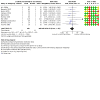
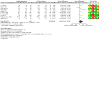
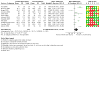

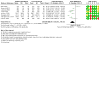
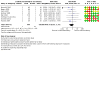
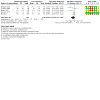
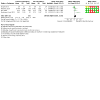

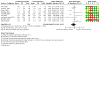
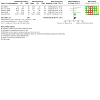
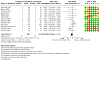
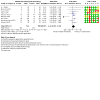
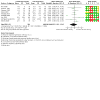
Update of
-
Limited versus full sternotomy for aortic valve replacement.Cochrane Database Syst Rev. 2017 Apr 10;4(4):CD011793. doi: 10.1002/14651858.CD011793.pub2. Cochrane Database Syst Rev. 2017. Update in: Cochrane Database Syst Rev. 2023 Dec 6;12:CD011793. doi: 10.1002/14651858.CD011793.pub3. PMID: 28394022 Free PMC article. Updated.
Similar articles
-
Limited versus full sternotomy for aortic valve replacement.Cochrane Database Syst Rev. 2017 Apr 10;4(4):CD011793. doi: 10.1002/14651858.CD011793.pub2. Cochrane Database Syst Rev. 2017. Update in: Cochrane Database Syst Rev. 2023 Dec 6;12:CD011793. doi: 10.1002/14651858.CD011793.pub3. PMID: 28394022 Free PMC article. Updated.
-
Drugs for preventing postoperative nausea and vomiting in adults after general anaesthesia: a network meta-analysis.Cochrane Database Syst Rev. 2020 Oct 19;10(10):CD012859. doi: 10.1002/14651858.CD012859.pub2. Cochrane Database Syst Rev. 2020. PMID: 33075160 Free PMC article.
-
Negative pressure wound therapy for surgical wounds healing by primary closure.Cochrane Database Syst Rev. 2022 Apr 26;4(4):CD009261. doi: 10.1002/14651858.CD009261.pub7. Cochrane Database Syst Rev. 2022. PMID: 35471497 Free PMC article.
-
Conservative, physical and surgical interventions for managing faecal incontinence and constipation in adults with central neurological diseases.Cochrane Database Syst Rev. 2024 Oct 29;10(10):CD002115. doi: 10.1002/14651858.CD002115.pub6. Cochrane Database Syst Rev. 2024. PMID: 39470206
-
Rehabilitation for ankle fractures in adults.Cochrane Database Syst Rev. 2024 Sep 23;9(9):CD005595. doi: 10.1002/14651858.CD005595.pub4. Cochrane Database Syst Rev. 2024. PMID: 39312389
Cited by
-
2025 Heart Disease and Stroke Statistics: A Report of US and Global Data From the American Heart Association.Circulation. 2025 Feb 25;151(8):e41-e660. doi: 10.1161/CIR.0000000000001303. Epub 2025 Jan 27. Circulation. 2025. PMID: 39866113 Review.
-
[Cranberry juice, cranberry tablets, or increased fluid intake for urinary tract infections: a systematic literature search and network meta-analysis].Urologie. 2025 Feb;64(2):173-175. doi: 10.1007/s00120-024-02514-0. Epub 2025 Jan 28. Urologie. 2025. PMID: 39875574 German. No abstract available.
-
Obesity and acute type A aortic dissection: unraveling surgical outcomes through the lens of the upper hemisternotomy approach.Front Cardiovasc Med. 2024 Feb 1;11:1301895. doi: 10.3389/fcvm.2024.1301895. eCollection 2024. Front Cardiovasc Med. 2024. PMID: 38361588 Free PMC article.
-
Enhanced Recovery After Cardiac Surgery for Minimally Invasive Valve Surgery: A Systematic Review of Key Elements and Advancements.Medicina (Kaunas). 2025 Mar 13;61(3):495. doi: 10.3390/medicina61030495. Medicina (Kaunas). 2025. PMID: 40142306 Free PMC article.
-
Pulmonary endarterectomy through inverted-T upper hemisternotomy.JTCVS Tech. 2024 Oct 18;28:65-72. doi: 10.1016/j.xjtc.2024.09.021. eCollection 2024 Dec. JTCVS Tech. 2024. PMID: 39669357 Free PMC article.
References
References to studies included in this review
Aris 1999a {published data only}
-
- Aris A, Camara ML, Montiel J, Delgado LJ, Galan J, Litvan H. Ministernotomy versus median sternotomy for aortic valve replacement: a prospective, randomized study. Annals of Thoracic Surgery 1999;67:1583-7. - PubMed
Bonacchi 2002 {published data only}
-
- Bonacchi M, Prifti E, Giunti G, Frati G, Sani G. Does ministernotomy improve postoperative outcome in aortic valve operation? A prospective randomized study. Annals of Thoracic Surgery 2002;73:460-5. - PubMed
Borger 2015 {published data only}
-
- Borger MA, Dohmen PM, Knosalla C, Hammerschmidt R, Merk DR, Richter M, et al. Haemodynamic benefits of rapid deployment aortic valve replacement via a minimally invasive approach: 1-year results of a prospective multicentre randomized controlled trial. European Journal of Cardio-thoracic Surgery 2016;50(4):713-20. - PubMed
-
- Borger MA, Moustafine V, Conradi L, Knosalla C, Richter M, Merk DR, et al. A randomized multicenter trial of minimally invasive rapid deployment versus conventional full sternotomy aortic valve replacement. Annals of Thoracic Surgery 2015;99:17-25. - PubMed
Calderon 2009 {published data only}
-
- Calderon J, Richebe P, Guibaud JP, Coiffic A, Branchard O, Asselineau J, et al. Prospective randomized study of early pulmonary evaluation of patients scheduled for aortic valve surgery performed by ministernotomy or total median sternotomy. Journal of Cardiothoracic and Vascular Anesthesia 2009;23:795-801. - PubMed
Dalén 2018 {published data only}
-
- Dalén M, Da Silva CO, Sartipy U, Winter R, Franco-Cereceda A, Barimani J, et al. Comparison of right ventricular function after ministernotomy and full sternotomy aortic valve replacement: a randomized study. Interactive CardioVascular and Thoracic Surgery 2018;26:790-7. [DOI: 10.1093/icvts/ivx422] - DOI - PubMed
-
- Hashemi N, Johnsson J, Gomez A, Alam M, Winter R. The impact of right ventricular function from aortic valve replacement: a randomised study comparing minimally invasive aortic valve surgery and conventional open heart surgery. European Heart Journal Cardiovascular Imaging 2016;17(ii):130.
-
- Hashemi N, Johnson J, Brodin LA, Gomes-Bernardes A, Sartipy U, Svenarud P, et al. Right ventricular mechanics and contractility after aortic valve replacement surgery: a randomised study comparing minimally invasive versus conventional approach. Open Heart 2018;5:e000842. [DOI: 10.1136/openhrt-2018-000842] - DOI - PMC - PubMed
Dogan 2003 {published data only}
-
- Dogan S, Dzemali O, Wimmer-Greinecker G, Derra P, Doss M, Khan MF, et al. Minimally invasive versus conventional aortic valve replacement: a prospective randomized trial. Journal of Heart Valve Disease 2003;12:76-80. - PubMed
Gofus 2020 {published data only}
-
- Gofus J, Vobornik M, Koblizek V, Smolak P, Myjavec A, Vojacek J, et al. Pulmonary function and quality of life after aortic valve replacement through ministernotomy: a prospective randomized study. Kardiologia Polska (Polish Heart Journal) 2020;78(12):1278-80. [DOI: 10.33963/KP.15668] [PMID: ] - DOI - PubMed
Hancock 2019 {published and unpublished data}
Mächler 1999 {published data only}
-
- Mächler HE, Bergmann P, Anelli-Monti M, Dacar D, Rehak P, Knez I, et al. Minimally invasive versus conventional aortic valve operations: a prospective study in 120 patients. Annals of Thoracic Surgery 1999;67:1001-5. - PubMed
Moustafa 2007 {published data only}
-
- Moustafa MA, Abdelsamad AA, Zakaria G, Omarah MM. Minimal vs median sternotomy for aortic valve replacement. Asian Cardiovascular Thoracic Annals 2007;15:472-5. - PubMed
Nair 2018 {published data only}
-
- Nair SK, Sudarshan CD, Thorpe BS, Singh J, Pillay T, Catarino P, et al. Mini-Stern trial: a randomized trial comparing mini-sternotomy to full median sternotomy for aortic valve replacement. Journal of Thoracic and Cardiovascular Surgery 2018;156(6):2124-32. [DOI: 10.1016/j.jtcvs.2018.05.057] - DOI - PubMed
Rodríguez‐Caulo 2021 {published data only}
-
- Rodríguez-Caulo EA, Guijarro-Contreras A, Guzón A, Otero-Forero J, Mataró MJ, Sánchez-Espín G, et al. Quality of life, satisfaction and outcomes after ministernotomy versus full sternotomy aortic valve replacement (QUALITY-AVR). Seminars in Thoracic and Cardiovascular Surgery 2021;33(2):328-334. [DOI: 10.1053/j.semtcvs.2020.07.013] - DOI - PubMed
Shneider 2020 {published data only}
-
- Shneider YA, Tsoi MD, Fomenko MS, Pavlov AA, Shilenko PA. Aortic valve replacement via J-shaped partial upper sternotomy: randomized trial, mid-term results [Effektivnost' i bezopasnost' protezirovaniya aortal'nogo klapana cherez <<mini-J>> sternotomiyu: randomizirovannoe issledovanie, sredne-otdalennye rezul'taty]. Khirurgiia (Mosk) 2020;7:25-30. [DOI: 10.17116/hirurgia202007125] - DOI - PubMed
References to studies excluded from this review
Abjigtova 2021 {published data only}
-
- Abjigitova D, Veen KM, Mokhles MM, Bekkers JA, Oei FB, Bogers AJ. Initial clinical experience with minimally invasive surgical aortic valve replacement. Journal of Cardiovascular Surgery 2021;62(3):268-77. - PubMed
Aris 1999b {published data only}
-
- Aris A, Camara ML, Casan P, Litvan H. Pulmonary function following aortic valve replacement: a comparison between ministernotomy and median sternotomy. Journal of Heart Valve Disease 1999;8(6):605-8. - PubMed
Bakir 2014 {published data only}
-
- Bakir I, Casselman FP, Onan B, Van Praet F, Vermeulen Y, Degrieck I. Does a minimally invasive approach increase the incidence of patient-prosthesis mismatch in aortic valve replacement? Journal of Heart Valve Disease 2014;23(2):161-7. - PubMed
Baumbach 2010 {published data only}
-
- Baumbach H, Burger JH, Nagib R, Albert M, Ursulescu A, Franke U. Minimal invasive access-the beneficial impact on quality of life for patients undergoing isolated aortic valve replacement. Thoracic and Cardiovascular Surgeon 2010;58:n. pag..
Borrero 2020 {published data only}
-
- Borrero A, Samboni TJ, Prado N, Carrillo-Gomez DC, Giraldo-Gonzalez GC, Florez-Elvira L, et al. J-Shaped upper mini-sternotomy versus full sternotomy for aortic valve replacement: a comparative study. Heart Surgery Forum 2020;23(4):E411-5. - PubMed
Bruce 2014 {published data only}
-
- Bruce KM, Yelland GW, Almeida AA, Smith JA, Robinson SR. Effects on cognition of conventional and robotically assisted cardiac valve operation. Annals of Thoracic Surgery 2014;97(1):48-55. - PubMed
Canosa 1999 {published data only}
-
- Canosa C, Mariani MA, Grandjean JG, Alessandrini F, Boonstra PW, De Filippo CM, et al. Aortic valve replacement via ministernotomy: early results of a two-center study. Cardiologia 1999;44(10):925-7. - PubMed
Chang 1999 {published data only}
-
- Chang YS, Lin PJ, Chang CH, Chu JJ, Tan PP. "I" ministernotomy for aortic valve replacement. Annals of Thoracic Surgery 1999;68(1):40-5. - PubMed
Christiansen 1999 {published data only}
-
- Christiansen S, Stypmann J, Tjan TD, Wichter T, Van Aken H, Scheld HH, et al. Minimally-invasive versus conventional aortic valve replacement - perioperative course and mid-term results. European Journal of Cardio-thoracic Surgery 1999;16(6):647-52. - PubMed
Concistre 2013 {published data only}
-
- Concistre G, Santarpino G, Pfeiffer S, Farneti P, Miceli A, Chiaramonti F, et al. Two alternative sutureless strategies for aortic valve replacement: a two-center experience. Innovations: Technology & Techniques in Cardiothoracic & Vascular Surgery 2013;8(4):253-7. - PubMed
Corbi 2003 {published data only}
-
- Corbi P, Rahmati M, Donal E, Lanquetot H, Jayle C, Menu P, et al. Prospective comparison of minimally invasive and standard techniques for aortic valve replacement: initial experience in the first hundred patients. Journal of Cardiac Surgery 2003;18(2):133-9. - PubMed
Dalen 2015 {published data only}
-
- Dalen M, Biancari F, Rubino AS, Santarpino G, De Praetere H, Kasama K, et al. Ministernotomy versus full sternotomy aortic valve replacement with a sutureless bioprosthesis: a multicenter study. Annals of Thoracic Surgery 2015;99(2):524-30. - PubMed
Detter 2002b {published data only}
-
- Detter C, Deuse T, Boehm DH, Reichenspurner H, Reichart B. Midterm results and quality of life after minimally invasive vs. conventional aortic valve replacement. Thoracic and Cardiovascular Surgeon 2002;50(6):337-41. - PubMed
Doll 2002 {published data only}
-
- Doll N, Borger MA, Hain J, Bucerius J, Walther T, Gummert JF, et al. Minimal access aortic valve replacement: effects on morbidity and resource utilization. Annals of Thoracic Surgery 2002;74(4):S1318-22. - PubMed
Fareed 2018 {published and unpublished data}
-
- Fareed S, Bassiony A. Early outcome of mini aortic valve replacement surgery. Journal of the Egyptian Society of Cardio-thoracic Surgery 2018;26(1):1-7.
Farhat 2003 {published data only}
-
- Farhat F, Lu Z, Lefevre M, Montagna P, Mikaeloff P, Jegaden O. Prospective comparison between total sternotomy and ministernotomy for aortic valve replacement. Journal of Cardiac Surgery 2003;18(5):396-401; discussion 402-3. - PubMed
Ferdinand 2001 {published data only}
-
- Ferdinand FD, Sutter FP, Goldman SM. Clinical use of stentless aortic valves with standard and minimally invasive surgical techniques. Seminars in Thoracic and Cardiovascular Surgery 2001;13(3):283-90. - PubMed
Foghsgaard 2009 {published data only}
Frazier 1998 {published data only}
-
- Frazier BL, Derrick MJ, Purewal SS, Sowka LR, Johna S. Minimally invasive aortic valve replacement. European Journal of Cardio-thoracic Surgery 1998;14 Suppl 1:S122-5. - PubMed
Gilmanov 2013 {published data only}
-
- Gilmanov D, Bevilacqua S, Murzi M, Cerillo AG, Gasbarri T, Kallushi E, et al. Minimally invasive and conventional aortic valve replacement: a propensity score analysis. Annals of Thoracic Surgery 2013;96(3):837-43. - PubMed
Glauber 2013 {published data only}
-
- Glauber M, Miceli A, Gilmanov D, Ferrarini M, Bevilacqua S, Farneti PA, et al. Right anterior minithoracotomy versus conventional aortic valve replacement: a propensity score matched study. Journal of Thoracic & Cardiovascular Surgery 2013;145(5):1222-6. - PubMed
Glower 2014 {published data only}
-
- Glower DD, Desai BS, Hughes GC, Milano CA, Gaca JG. Aortic valve replacement via right minithoracotomy versus median sternotomy: a propensity score analysis. Innovations: Technology & Techniques in Cardiothoracic & Vascular Surgery 2014;9(2):75-81; discussion 81. - PubMed
Hamano 2001 {published data only}
-
- Hamano K, Kawamura T, Gohra H, Katoh T, Fujimura Y, Zempo N, et al. Stress caused by minimally invasive cardiac surgery versus conventional cardiac surgery: incidence of systemic inflammatory response syndrome. World Journal of Surgery 2001;25(2):117-21. - PubMed
Hiraoka 2011 {published data only}
-
- Hiraoka A, Kuinose M, Chikazawa G, Totsugawa T, Katayama K, Yoshitaka H. Minimally invasive aortic valve replacement surgery: comparison of port-access and conventional standard approach. Circulation Journal 2011;75(7):1656-60. - PubMed
Johnston 2012 {published data only}
-
- Johnston DR, Atik FA, Rajeswaran J, Blackstone EH, Nowicki ER, Sabik JF 3rd, et al. Outcomes of less invasive J-incision approach to aortic valve surgery. Journal of Thoracic & Cardiovascular Surgery 2012;144(4):852-8.e3. - PubMed
Korach 2010 {published data only}
-
- Korach A, Shemin RJ, Hunter CT, Bao Y, Shapira OM. Minimally invasive versus conventional aortic valve replacement: a 10-year experience. Journal of Cardiovascular Surgery 2010;51(3):417-21. - PubMed
Leshnower 2006 {published data only}
-
- Leshnower BG, Trace CS, Boova RS. Port-access-assisted aortic valve replacement: a comparison of minimally invasive and conventional techniques. Heart Surgery Forum 2006;9(2):E560-4; discussion E564. - PubMed
Liu 1999b {published data only}
-
- Liu J, Sidiropoulos A, Konertz W. Minimally invasive aortic valve replacement (AVR) compared to standard AVR. European Journal of Cardio-thoracic Surgery 1999;16 Suppl 2:S80-3. - PubMed
Mahesh 2011 {published data only}
-
- Mahesh B, Navaratnarajah M, Mensah K, Ilsley C, Amrani M. Mini-sternotomy aortic valve replacement: is it safe and effective? Comparison with standard techniques. Journal of Heart Valve Disease 2011;20(6):650-6. - PubMed
Masiello 2002 {published data only}
-
- Masiello P, Coscioni E, Panza A, Triumbari F, Preziosi G, Di Benedetto G. Surgical results of aortic valve replacement via partial upper sternotomy: comparison with median sternotomy. Cardiovascular Surgery 2002;10(4):333-8. - PubMed
Mihos 2013 {published data only}
-
- Mihos CG, Santana O, Lamas GA, Lamelas J. Incidence of postoperative atrial fibrillation in patients undergoing minimally invasive versus median sternotomy valve surgery. Journal of Thoracic & Cardiovascular Surgery 2013;146(6):1436-41. - PubMed
Mikus 2013 {published data only}
-
- Mikus E, Calvi S, Tripodi A, Lamarra M, Del Giglio M. Upper 'J' ministernotomy versus full sternotomy: an easier approach for aortic valve reoperation. Journal of Heart Valve Disease 2013;22(3):295-300. - PubMed
Ruttmann 2010 {published data only}
-
- Ruttmann E, Gilhofer TS, Ulmer H, Chevtchik O, Kocher A, Schistek R, et al. Propensity score-matched analysis of aortic valve replacement by mini-thoracotomy. Journal of Heart Valve Disease 2010;19(5):606-14. - PubMed
Sansone 2012 {published data only}
-
- Sansone F, Punta G, Parisi F, Dato GM, Zingarelli E, Flocco R, et al. Right minithoracotomy versus full sternotomy for the aortic valve replacement: preliminary results. Heart, Lung & Circulation 2012;21(3):169-73. - PubMed
Santarpino 2012 {published data only}
-
- Santarpino G, Pfeiffer S, Schmidt J, Concistre G, Fischlein T. Sutureless aortic valve replacement: first-year single-center experience. Annals of Thoracic Surgery 2012;94(2):504-8; discussion 508-9. - PubMed
Sener 2001 {published data only}
-
- Sener T, Gercekoglu H, Evrenkaya S, Aydin NB, Cimen S, Demirtas M, et al. Comparison of minithoracotomy with conventional sternotomy methods in valve surgery. Heart Surgery Forum 2001;4(1):26-30. - PubMed
Sharony 2003 {published data only}
-
- Sharony R, Grossi EA, Saunders PC, Schwartz CF, Ribakove GH, Culliford AT, et al. Minimally invasive aortic valve surgery in the elderly: a case-control study. Circulation 2003;108 Suppl 1:II43-7. - PubMed
Sharony 2004 {published data only}
-
- Sharony R, Grossi EA, Saunders PC, Schwartz CF, Ribakove GH, Baumann FG, et al. Propensity score analysis of a six-year experience with minimally invasive isolated aortic valve replacement. Journal of Heart Valve Disease 2004;13(6):887-93. - PubMed
Sidiropolous 1999 {published data only}
-
- Sidiropolous A, Liu J, Konertz W. Minimally invasive access for aortic valve replacement (AVR). Zeitschrift fur Kardiologie 1999;88(S4):30-4.
Stamou 2003 {published data only}
-
- Stamou SC, Kapetanakis EI, Lowery R, Jablonski KA, Frankel TL, Corso PJ. Allogeneic blood transfusion requirements after minimally invasive versus conventional aortic valve replacement: a risk-adjusted analysis. Annals of Thoracic Surgery 2003;76(4):1101-6. - PubMed
Suenaga 2004 {published data only}
-
- Suenaga E, Suda H, Katayama Y, Sato M, Fujita H, Yoshizumi K, et al. Comparison of limited and full sternotomy in aortic valve replacement. Japanese Journal of Thoracic & Cardiovascular Surgery 2004;52(6):286-91. - PubMed
Svensson 1998 {published data only}
-
- Svensson LG, D'Agostino RS. Minimal-access aortic and valvular operations, including the "J/j" incision. Annals of Thoracic Surgery 1998;66(2):431-5. - PubMed
Vanoverbeke 2004 {published data only}
-
- Vanoverbeke H, Van Belleghem Y, Francois K, Caes F, Bove T, Van Nooten G. Operative outcome of minimal access aortic valve replacement versus standard procedure. Acta Chirurgica Belgica 2004;104(4):440-4. - PubMed
Walther 1999b {published data only}
-
- Walther T, Falk V, Metz S, Diegeler A, Battellini R, Autschbach R, et al. Pain and quality of life after minimally invasive versus conventional cardiac surgery. Annals of Thoracic Surgery 1999;67(6):1643-7. - PubMed
Wheatley 2004 {published data only}
-
- Wheatley GH 3rd, Prince SL, Herbert MA, Ryan WH. Port-access aortic valve surgery: a technique in evolution. Heart Surgery Forum 2004;7(6):E628-31. - PubMed
Yon 2014 {published data only}
-
- Yon LC, Totaro P, Mazzola A. Ministernotomy versus median sternotomy for isolated aortic valve replacement: is it time to define a new gold standard? Innovations: Technology and Techniques in Cardiothoracic and Vascular Surgery 2014;9(3):241-2.
You 2012 {published data only}
-
- You B, Gao F, Li P, Xu Y, Xu LL, Liu S, et al. Clinical study of minimally invasive versus conventional sternotomy for aortic valve replacement. Chung-Hua i Hsueh Tsa Chih [Chinese Medical Journal] 2012;92(40):2859-61. - PubMed
References to ongoing studies
NCT02272621 {published data only (unpublished sought but not used)}
-
- NCT02272621. Surgical trauma after partial upper hemisternotomy versus full sternotomy aortic valve replacement. classic.clinicaltrials.gov/ct2/history/NCT02272621?V_3=View (first received 21 October 2014).
NCT04012060 (LIAR) {published data only (unpublished sought but not used)}
-
- Klop ID, Putte BP, Kloppenburg GT, Sprangers MA, Nieuwkerk PT, Klein P. Comparing quality of life and postoperative pain after limited access and conventional aortic valve replacement: design and rationale of the limited access aortic valve replacement (LIAR) trial. Contemporary Clinical Trials Communications 2021;21:100700. [DOI: 10.1016/j.conctc.2021.100700] [PMID: ] - DOI - PMC - PubMed
-
- NCT04012060. Patient reported health-related quality of life after limited access and conventional aortic valve replacement (LIAR) [Patient reported health-related quality of life after limited access and conventional aortic valve replacement: design and rationale of the LIAR-Trial]. clinicaltrials.gov/study/NCT04012060 (first received 2 July 2019).
Additional references
Autschbach 1998
-
- Autschbach R, Walther T, Falk V, Diegeler A, Metz S, Mohr FW. S-shaped in comparison to L-shaped partial sternotomy for less invasive aortic valve replacement. European Journal of Cardio-thoracic Surgery 1998;14 Suppl 1:S117-21. - PubMed
Baumgartner 2017
Braunwald 2000
-
- Braunwald E. Aortic valve replacement: an update at the turn of the millennium. European Heart Journal 2000;21(13):1032-3. - PubMed
Brown 2009
-
- Brown ML, McKellar SH, Sundt TM, Schaff HV. Ministernotomy versus conventional sternotomy for aortic valve replacement: a systematic review and meta-analysis. Journal of Thoracic and Cardiovascular Surgery 2009;137(3):670-9.e5. - PubMed
Carabello 2013
-
- Carabello BA. Introduction to aortic stenosis. Circulation Research 2013;113(2):179-85. - PubMed
Carapetis 2005
-
- Carapetis JR, Steer AC, Mulholland EK, Weber M. The global burden of group A streptococcal diseases. Lancet Infectious Diseases 2005;5(11):685-94. - PubMed
Coffey 2014
-
- Coffey S, Cox B, Williams MJ. The prevalence, incidence, progression, and risks of aortic valve sclerosis: a systematic review and meta-analysis. Journal of the American College of Cardiology 2014;63(25 Pt A):2852-61. - PubMed
Cohn 1997
Cohn 1998
-
- Cohn LH. Minimally invasive aortic valve surgery: technical considerations and results with the parasternal approach. Journal of Cardiac Surgery 1998;13(4):302-5. - PubMed
Cosgrove 1996
-
- Cosgrove DM, Sabik JF. Minimally invasive approach for aortic valve operations. Annals of Thoracic Surgery 1996;62(2):596-7. - PubMed
d'Arcy 2011
-
- d'Arcy JL, Prendergast BD, Chambers JB, Ray SG, Bridgewater B. Valvular heart disease: the next cardiac epidemic. Heart 2011;97(2):91-3. - PubMed
Dare 1993
-
- Dare AJ, Veinot JP, Edwards WD, Tazelaar HD, Schaff HV. New observations on the etiology of aortic valve disease: a surgical pathologic study of 236 cases from 1990. Human Pathology 1993;24(12):1330-8. - PubMed
Detter 2002a
-
- Detter C, Deuse T, Boehm DH, Reichenspurner H, Reichart B. Midterm results and quality of life after minimally invasive vs. conventional aortic valve replacement. Thoracic and Cardiovascular Surgeon 2002;50(6):337-41. - PubMed
Ehrlich 2000
-
- Ehrlich W, Skwara W, Klavekorn WP, Roth M, Bauer EP. Do patients want minimally invasive aortic valve replacement? European Journal of Cardio-thoracic Surgery 2000;17(6):714-7. - PubMed
Freeman 2005
-
- Freeman RV, Otto CM. Spectrum of calcific aortic valve disease pathogenesis, disease progression, and treatment strategies. Circulation 2005;111(24):3316-26. - PubMed
Gohlke‐Bärwolf 2013
Hancock 2019
-
- Hancock HC, Maier RH, Kasim AS, Mason JM, Murphy GJ, Goodwin AT, et al. Mini-sternotomy versus conventional sternotomy for aortic valve replacement. Journal of the American College of Cardiology 2019;73(19):2491-92. [DOI: ] - PubMed
Higgins 2017
-
- Higgins JP, Altman DG, Sterne JA, editor(s). Chapter 8: Assessing risk of bias in included studies. In: Higgins JP, Churchill R, Chandler J, Cumpston MS, editor(s). Cochrane Handbook for Systematic Reviews of Interventions Version 5.2.0 (updated June 2017). Cochrane, 2017. Available from training.cochrane.org/handbook/archive/v5.2.
Higgins 2020
-
- Higgins JP, Thomas J, Chandler J, Cumpston M, Li T, Page MJ, et al, editor(s). Cochrane Handbook for Systematic Reviews of Interventions Version 6.1 (updated September 2020). Cochrane, 2020. Available from training.cochrane.org/handbook/archive/v6.1/.
Iung 2003
-
- Iung B, Baron G, Butchart EG, Delahaye F, Gohlke-Barwolf C, Levang OW, et al. A prospective survey of patients with valvular heart disease in Europe: the Euro Heart Survey on Valvular Heart Disease. European Heart Journal 2003;24(13):1231-43. - PubMed
Iung 2014
-
- Iung B, Vahanian A. Epidemiology of acquired valvular heart disease. Canadian Journal of Cardiology 2014;30(9):962-70. - PubMed
Khoshbin 2011
Kumar 2013
Lee 2004
-
- Lee BY, Gleason TG, Sonnad SS. Quality of life after aortic valve replacement. Expert Review of Pharmacoeconomics and Outcomes Research 2004;4(3):265-75. - PubMed
Lee 2011
Lefebvre 2011
-
- Lefebvre C, Manheimer E, Glanville J. Chapter 6: Searching for studies. In: Higgins JP, Green S, editor(s). Cochrane Handbook for Systematic Reviews of Interventions Version 5.1.0 (updated March 2011). The Cochrane Collaboration, 2011. Available from handbook.cochrane.org.
Lillehei 1962
-
- Lillehei CW, Levy MJ, Varco RL, Wang Y, Adams P, Anderson RC. Surgical treatment of congenital aortic stenosis by cardiopulmonary bypass including methods for preoperative diagnosis of types. Circulation 1962;26(5):856-72. - PubMed
Liu 1999a
-
- Liu J, Sidiropoulos A, Konertz W. Minimally invasive aortic valve replacement (AVR) compared to standard AVR. European Journal of Cardio-thoracic Surgery 1999;16(Suppl 2):S80-3. - PubMed
Malaisrie 2014
-
- Malaisrie SC, Barnhart GR, Farivar RS, Mehall J, Hummel B, Rodriguez E, et al. Current era minimally invasive aortic valve replacement: techniques and practice. Journal of Thoracic and Cardiovascular Surgery 2014;147(1):6-14. - PubMed
Manjunath 2014
Murtuza 2008
-
- Murtuza B, Pepper JR, Stanbridge RD, Jones C, Rao C, Darzi A, et al. Minimal access aortic valve replacement: is it worth it? Annals of Thoracic Surgery 2008;85(3):1121-31. [PMID: ] - PubMed
Nair 2019
-
- Nair SK, Sudarshan CD, Thorpe BS, Singh J, Pillay T, Catarino P, et al. Mini-SternTrial: a randomized trial comparing mini-sternotomy to fullmedian sternotomy for aortic valve replacement. Journal of Thoracic and Cardiovascular Surgery 2018;156(6):2124-32. - PubMed
Nishimura 2017
-
- Nishimura RA, Otto CM, Bonow RO, Carabello BA, Erwin 3rd JP, Fleisher LA, et al. 2017 AHA/ACC Focused Update of the 2014 AHA/ACC Guideline for the Management of Patients With Valvular Heart Disease: a report of the American College of Cardiology/American Heart Association Task Force on clinical practice guidelines. Circulation 2017;135(25):e1159-e1195. [DOI: 10.1161/CIR.0000000000000503] - DOI - PubMed
Nkomo 2006
-
- Nkomo VT, Gardin JM, Skelton TN, Gottdiener JS, Scott CG, Enriquez-Sarano M. Burden of valvular heart diseases: a population-based study. Lancet 2006;368(9540):1005-11. - PubMed
Otto 1997
-
- Otto CM, Burwash IG, Legget ME, Munt BI, Fujioka M, Healy NL, et al. Prospective study of asymptomatic valvular aortic stenosis clinical, echocardiographic, and exercise predictors of outcome. Circulation 1997;95(9):2262-70. - PubMed
Pellikka 2005
-
- Pellikka PA, Sarano ME, Nishimura RA, Malouf JF, Bailey KR, Scott CG, et al. Outcome of 622 adults with asymptomatic, hemodynamically significant aortic stenosis during prolonged follow-up. Circulation 2005;111(24):3290-5. - PubMed
Phan 2014
-
- Phan K, Xie A, Di EM, Yan TD. A meta-analysis of minimally invasive versus conventional sternotomy for aortic valve replacement. Annals of Thoracic Surgery 2014;98(4):1499-511. - PubMed
Rao 1993
RevMan 2014 [Computer program]
-
- Review Manager (RevMan). Version 5.3. Copenhagen: The Nordic Cochrane Centre, The Cochrane Collaboration, 2014.
RevMan Web 2022 [Computer program]
-
- Review Manager Web (RevMan Web). Version 4.12.0. The Cochrane Collaboration, 2022. Available at revman.cochrane.org.
Rose 1986
-
- Rose AG. Etiology of acquired valvular heart disease in adults. A survey of 18,132 autopsies and 100 consecutive valve-replacement operations. Archives of Pathology & Laboratory Medicine 1986;110(5):385-8. - PubMed
Ross 1968
-
- Ross J, Braunwald E. Aortic stenosis. Circulation 1968;38(1 Suppl):61-7. - PubMed
Scheuble 2005
-
- Scheuble A, Vahanian A. Aortic insufficiency. American Journal of Cardiovascular Drugs 2005;5(2):113-20. - PubMed
Schwarz 1982
-
- Schwarz F, Baumann P, Manthey J, Hoffmann M, Schuler G, Mehmel HC, et al. The effect of aortic valve replacement on survival. Circulation 1982;66(5):1105-10. - PubMed
Svensson 2013
-
- Svensson LG, Adams DH, Bonow RO, Kouchoukos NT, Miller DC, O'Gara PT, et al. Aortic valve and ascending aorta guidelines for management and quality measures: executive summary. Annals of Thoracic Surgery 2013;95(4):1491-505. - PubMed
Thaden 2014
-
- Thaden JJ, Nkomo VT, Enriquez-Sarano M. The global burden of aortic stenosis. Progress in Cardiovascular Diseases 2014;56(6):565-71. - PubMed
Walther 1999a
-
- Walther T, Falk V, Metz S, Diegeler A, Battellini R, Autschbach R, et al. Pain and quality of life after minimally invasive versus conventional cardiac surgery. Annals of Thoracic Surgery 1999;67(6):1643-7. - PubMed
References to other published versions of this review
Kirmani 2015
Publication types
MeSH terms
Associated data
LinkOut - more resources
Full Text Sources
Medical
Research Materials

